Visualise yourself perfecting your trading method: spending countless hours working on a perfect system that has a 90% win rate and small losses. You study, study, study, and study again. At a certain point, the back-tested results give you the confidence to take it live.
After a few winning trades, you get stopped out. Instead of taking the loss as a natural occurrence in the markets, you try to "weed out" the imprecision in the system that caused this loss. You stop trading, go back to the drawing board and tweak the method.
If you can resonate with this situation, know this: no trading system is perfect and losses cannot be avoided. Many aspiring traders simply cannot accept this reality. Driven by fear, they tweak and mess up solid strategies, causing them to fall off the learning curve.
Show me the moneyWant a solid strategy for interacting with the markets? Play volatility breakouts. When you see price consolidating in a shallow manner, get ready to play the break out of whatever tight range has formed. (Preferably in an established trend.)
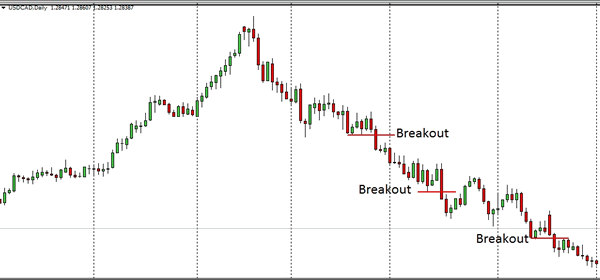
USDCAD Daily Chart. Source: Pepperstone MT4
Sounds simple, right? Tips like this have lured many aspiring traders to risk hard earned cash in the markets, without fully appreciating the fact that by no means is it a perfect strategy. In fact, it's not even a strategy in itself. It's only a part of a strategy, because it doesn't tell you:
* Where to exit if the market moves against you
* If & where to exit (if & when the market moves in your favour)
* How much to risk on any given signal
* What kind of consistency the signal has
But these considerations seem to be "tedious" and "boring" for most aspiring traders. So what happens is something like this:
* Read the magic formula: buy/sell volatility breakouts
* Scour the charts for situations that look like setups
* Risk 5% (or more) on each setup
* Go to sleep
* Wake up broke
* Initiate revenge trading until savings are depleted.
The people that actually stop themselves before it's too late are still in the game, but they can be frustrated and find it hard to hear the hard truth:
"…you were on the right track, but you really did not understand what you were doing. Furthermore, you were risking way too much, and had no idea how to manage your trades. Trading is more complex than simply clicking a button after certain conditions are met."
A lot of aspiring traders go on a quest for the Holy Grail system. They think this "perfect" system will give them tremendous results with minimal effort. Ultimately this will only make life harder rather than easier, because there really is no perfect system. There is no "best fit", nor is there anything like "one size fits all".
Adopt Solid Setups"We don't actually trade the markets. We trade our beliefs about the markets". – Van Tharp, PhD
If you believe there is a fail-safe way of raking in constant profits, your belief is not in line with the way the markets work. You will be constantly frustrated because your belief will take you on a never-ending journey of trial & error. This is also known as a wild goose chase.
It is important, early on in your trading career, to understand that no method is perfect. Every method is appropriate only in certain situations, and has advantages and disadvantages. The experienced traders know that the real key to trading performance is to understand what you're doing and why you're doing it.
With that said, let's explore some solid setups, and discuss how traders are able to mess them up.
a) Volatility Breakouts 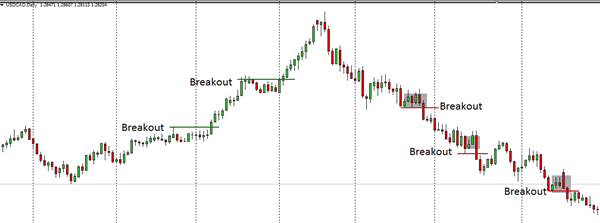
USDCAD Daily Chart. Source: Pepperstone MT4
Volatility expands and contracts in a cyclical manner. A volatility breakout strategy is based upon finding those moments when volatility is dropping, and stalking a breakout – usually in the direction of the prevailing trend. It is a profitable strategy that continues to be employed by many market professionals.
And yet, the quest for perfection can invalidate its edge. How?
* Playing volatility breakouts against the trend. These typically have a harder time performing, relative to breakouts in line with trend.
* Playing any breakout, without factoring in volatility. Typically, volatility breakout days close in the upper range of their 20-Day ATR.
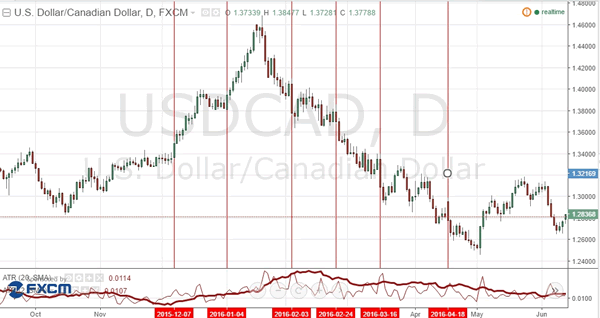
USDCAD Daily Chart Source: TradingView
* Risking too much on each single trade.
* Striving for perfection; using too many indicators and filters. That is possibly the easiest way to dilute any potential benefits of the method.
b) Trend Following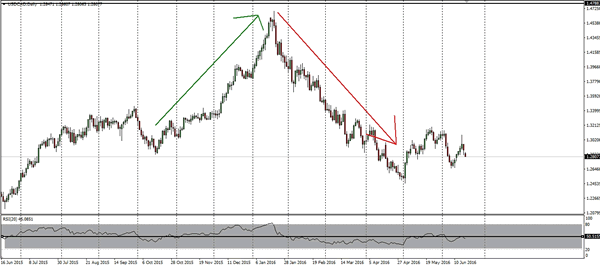
USDCAD Daily Chart Source: Pepperstone MT4
Trend following, at its core, is all about letting profits run and cutting losses. Playing pullbacks that do not violate the peak/trough structure of the trend, or breakouts in line with the trend, are two ways to follow a trend until it ends. But it's also quite easy to mess things up. Consider:
* Impatience. Following trends for quick pips is like using a Ferrari to go grocery shopping around town. You never use its full potential. Take the following example:

USDCAD Daily Chart Source: Pepperstone MT4
You see price starting a new trend in February 2016. A simple Stochastic Oscillator can help highlight potential high-quality pullbacks to help you engage with the trend at value. You see that the Daily peak/trough structure is still in place. So you decide to switch to a 1H timeframe to "nail the entry".
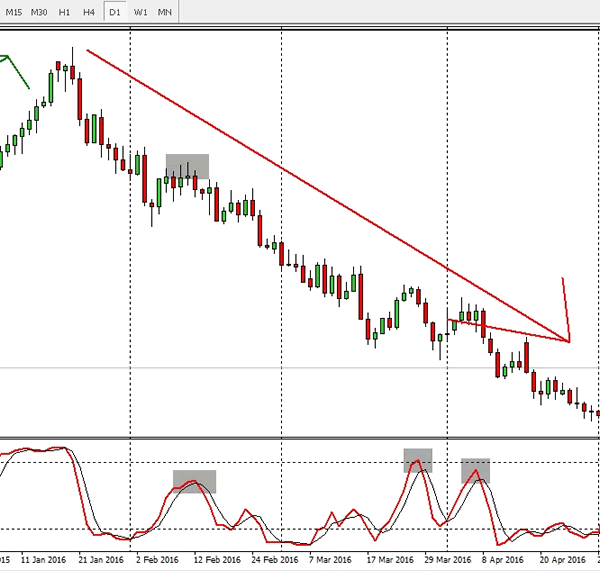
USDCAD 1H chart. Source: Pepperstone MT4
However, once on the 1H chart you also see all kinds of potential "trouble" zones. You lose track of the fact you're playing a pullback in a Daily trend, and you get caught micromanaging a potentially longer-term trade.
* Playing every breakout in line with the trend. Of course, qualifying breakouts (perhaps using volatility breakouts in line with the trend) is much better than playing everything & anything.
* Entering with a limit order at your "perfect price". See the example below:
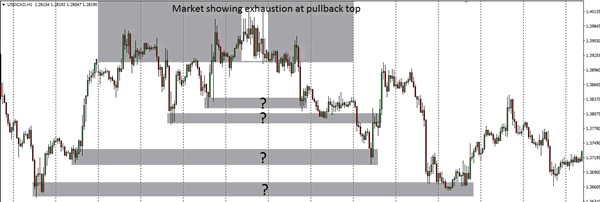
NZDUSD 4H chart. Source: Pepperstone MT4
Many traders assume "patience" means "only wait for the perfect price," where "perfect" is based on some kind of price pattern, level, indicator, etc. This is why we cannot really stalk "perfect" entries.
"All-in, All-out" strategies may work in some contexts, but with trend trading, it might be better to scale in and scale out. Looking for the perfect entry will oftentimes mean missed opportunities.
Confusing timeframes. When trend trading, the best thing to do is to choose one primary timeframe from which you observe your trend. A good choice is usually the Daily Chart. Then, when the Daily is pulling back or consolidating, you can dial down into lower time frames to try and get a better entry.
Avoid confusing time frames and trends. A pullback on the daily chart looks like a trend on the hourly chart!
Accept ImperfectionThe main idea is that no system, no setup, no indicator, and no method can ever be perfect. Usually, the more traders attempt to "optimize" or "perfect" a system, the more they deviate from the core concept of the system itself.
Moreover, the quest for the perfect method usually stems from fear of failure. The correct approach is to work through and understand this fear. It's the mindset that's wrong: not the market.
There will always be losses – the only thing to do is manage them correctly: cut the losses as soon as logically possible, and let your profits run as far as logically possible.
The correct mindset is something much more along these lines:
"I know that my next trade may not be successful, but I know that in time, after many attempts, on balance I will be positive."
Have a plan
"If you fail to plan, you are planning to fail." – Benjamin Franklin
At the end of the day, trading systems & setups are useful to build a strategy. Like any professional endeavour in life, in order to tackle the markets, you need a plan. The key is to have a plan that can be corrected and adjusted, based on the feedback (i.e. results) that you get when tackling the market.
Don't search for perfection; search for understanding. Become an expert at one strategy, and build a solid plan around it, having faith that whatever conditions the market may present, you will be ready to adapt.